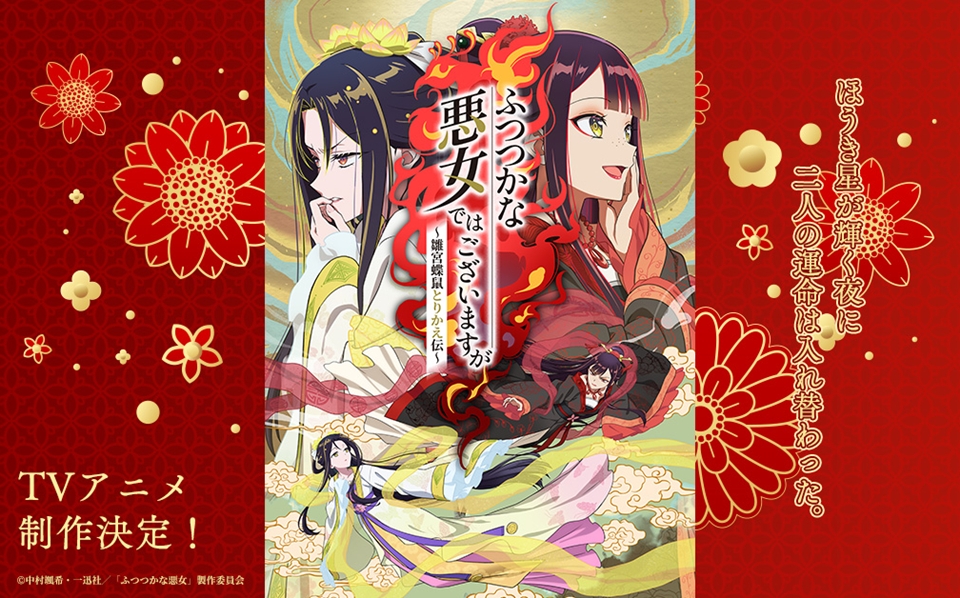Anne Shirley (2025) is an interesting little remake, especially when comparing it to its 1979 original counterpart, Anne of Green Gables . At first glance, these two anime appear to be more or less identical stories as they’re adaptations of the same source material but with different animation quality and visual aesthetics. However, when further dissecting them and analyzing what’s underneath the surface level, the differences become so much more stark and apparent. Anne of Green Gables primarily focuses on the first novel in Lucy Maud Montgomery’s iconic series, while Anne Shirley has a much loftier goal of adapting the first three novels of the book series ( Anne of Green Gables , Anne of Avonlea , and Anne of the Island ). This is important to note because not only do they highlight the rest of the differences, both obvious and subtle, that exist between these two shows, but they also showcase that these are ultimately not the same story. While Anne Shirley and Anne of Green Gables feature many of the same characters and plotlines, these are fundamentally distinct adaptations that accomplish very different goals. RELATED: Singer-Songwriter Tota Shares Anne Shirley Anime Opening Song Music Video Anne of Green Gables is held, especially among older anime fans, as a series classic that has stood the test of time and remains an engaging watch even to this day. This is primarily thanks to the contribution of the artists involved in the show’s development, a lot of whom went on to become Studio Ghibli icons like Hayao Miyazaki, Yoshifumi Kondo (director of Whisper of the Heart ), and especially Isao Takahata, the show’s director. Much of Takahata’s voice and directorial style is present throughout Anne of Green Gables in that, aside from the few moments of whimsical surrealism that embody Anne’s love for imagination, its story is told in a very grounded and realistic manner. Despite being an all-ages series that’s technically for children, Anne of Green Gables is a surprisingly mature series that doesn’t hold the audience’s hand and respects their intelligence by constantly asking them to engage with what they’re watching on a deeper, more emotional level. This is a very slow-paced show where very little plot progression can happen in a single episode. For example, when Matthew meets Anne for the first time and he reluctantly takes her back to Green Gables in the very first episode, the two don’t return home until the start of the second episode. Instead, much of it is focused on Matthew and Anne’s one-sided conversation in which Anne drones on and on about various topics like the pretty nature they pass by and her dislike for her red hair. While there are occasional moments of abstract imagery interspersed, such as the scene in which Anne imagines wearing a white dress while being carried by tiny flower fairies as Anne and Matthew ride through the White Way of Delight forest, Anne of Green Gables is primarily a dialogue-heavy anime where much of its conflict stems from interactions Anne has with other people. RELATED: Anne Shirley and Other Anime Based on Novels Yet the show’s pacing never feels as if it is attempting to waste time or add filler to drag out each episode’s runtime. This feels like a deliberate choice Takahata made because these slow, dialogue-driven scenes allow him to focus more on fleshing out the characters and making them feel like real, believable people. Therefore, whenever any major plot points occur in the series, their impact has so much more weight because the show’s priority on painstaking character development allows viewers to become engrossed in their respective storylines or conflicts and feel narratively fulfilled when they’re resolved. For example, while Marilla’s decision to keep Anne at Green Gables despite wanting a boy isn’t particularly surprising, it still feels immensely satisfying when it happens because the show takes five episodes to gradually build up Anne, Marilla, and Matthew’s characters and allow the audience to emotionally connect with them and their perspectives. Many of these episodes consist of them talking to each other — or Anne breaking down crying — whether on a buggy, at the dinner table, or in Anne’s bedroom. The more I learned about Anne’s backstory, personality, and her obsession with imagination and beauty, the better I understood how Matthew and Marilla are eventually won over by her and why they decide to adopt her. The show never feels boring or sluggish because so much substance is being presented. If anything, Anne of Green Gables ’ slow pacing only immerses the audience even more, as if the audience and the characters in the anime are experiencing a similar passage of time. For example, when Marilla confesses to Matthew that she can’t imagine Green Gables without Anne, despite only living with them for three weeks, I subconsciously agree with her because so many episodes had gone by between the beginning and when Marilla says this line that it almost feels like three weeks have passed in real-time. Ultimately, while Anne of Green Gables may not hold up as well in terms of visuals, its slow pace, heavy emphasis on dialogue, and meticulous character development make up for its weaknesses and have cemented its status as an anime classic. RELATED: Anne Shirley Anime Shares Beautiful Creditless Opening and Ending Movies Anne Shirley , meanwhile, is a completely different beast that surprisingly does not have much in common with Takahata’s anime. In some ways, Anne Shirley is the inverse of Anne of Green Gables because if the latter is a slow and methodical series that prioritizes characters, then the former is a fast-paced anime that puts vibes above all other elements. When I first watched Anne Shirley , I was taken aback by how much of the plot from the original Anne of Green Gables was being condensed in this remake. A single episode of Anne Shirley would cover the same amount of ground that roughly five episodes of Anne of Green Gables did. Oftentimes, some of the quieter scenes that weren’t essential to the plot but nonetheless fleshed out the characters in Anne of Green Gables are completely absent in this new version. I couldn’t understand why Anne Shirley was rushing through so much of the story that Takahata’s version slowly yet lovingly explored. The fast pace proved such an initial frustration that within the first two episodes, I was ready to just write Anne Shirley off as something that was simply just “not for me.” However, for the sake of professionalism, I continued to push through, and by the time I reached Episode 8 — which is the most recent episode released at the time of this piece’s writing — I strangely but eventually was won over by Anne Shirley ’s charming aesthetic and warming, wholesome tone. When taking aside the fact that Anne Shirley is adapting three books instead of one, it’s difficult to deny that the characters in Anne Shirley are not as well-developed or thoroughly fleshed out as their counterparts in Anne of Green Gables . Additionally, this remake’s fast pacing often doesn’t provide the same immersive passage of time or satisfying payoffs to plot threads that Takahata’s version has. Yet, I ended up enjoying Anne Shirley anyway because it ultimately doesn’t matter that this remake lacks any of the emotional or story depth that Anne of Green Gables has. This remake has completely different priorities in mind, and it was only when I subconsciously realized this halfway through my viewing experience that I stopped making comparisons between Anne Shirley and Anne of Green Gables and started appreciating this remake for what it was as its own unique story. RELATED: Anne Shirley Anime Confirms Naoko Yamada as Opening and Ending Animation Director Anne Shirley frankly has more in common with “wholesome” coming-of-age or slice-of-life anime like K-On , A Place Further Than The Universe , or Laid-Back Camp than it does with Anne of Green Gables . At their core, these are all anime where the main appeal is “cute anime characters are doing fun, wholesome things.” While they all have either a general storyline or narrative end goals that help keep them structured, they are merely just excuses for the adorable anime characters to get to the next cute and wholesome shenanigan, where they can once again warm the viewers’ hearts. By viewing Anne Shirley in this context, it is almost impossible not to enjoy this remake for what it is, as it very much accomplishes what it sets out to achieve. For example, Marilla and Matthew are much sweeter and more active parental figures in Anne Shirley compared to their counterparts in Anne of Green Gables , as they are constantly smiling at and embracing their adopted daughter with all the love they can muster. Similarly, characters like Gilbert or Mr. Philips, who were incredibly antagonistic in Anne of Green Gables , are much more sympathetic and sensitive characters who have lost much of their malicious behavioral traits in Anne Shirley and are much more considerate of Anne, even if she herself doesn’t much care for them. Even the opening theme of Anne Shirley does a fantastic job of capturing its warm tone, as the animation of Anne frolicking with or past her loved ones, combined with the upbeat music, perfectly encapsulates this anime’s wholesome vibes. It’s quite coincidental that Anne of Green Gables consisted of artists who would later go on to found and spearhead Studio Ghibli because Anne Shirley is an anime that is very obviously inspired by Ghibli films, specifically the more vibe-based ones like My Neighbor Totoro , Kiki’s Delivery Service , and Pom Poko . Like those aforementioned films, Anne Shirley creates an inviting atmosphere that lures viewers into the setting and its characters. Even if not much of “substance” occurs from a story and plot perspective, it is still a fulfilling experience where the audience can meaningfully take something away from what they’ve watched. Whenever Anne Shirley reaches any of the same plot points or arcs that Anne of Green Gables covers, more than anything, I’m thinking of the tone and atmosphere of those moments, experiencing the same sentiments that the characters at those moments were feeling. While that’s not to say that Anne of Green Gables lacked any sweetness or warmth, Anne Shirley is the version that excels at creating a vibes-first narrative where the main takeaway is not necessarily what story is being told but the emotional response that’s generated from that story. RELATED: Anne Shirley TV Anime Reveals Main Voice Cast Members, Staff Ultimately, while it’s understandably instinctual to want to compare Anne of Green Gables with Anne Shirley because they’re both adaptations of the same source material, it is simply the wrong way to approach either anime. Anne of Green Gables and Anne Shirley are, at the core, very different shows that have their own unique narrative designs and set out to accomplish distinct goals. The original Takahata anime is a slow, grounded series with a realistic approach to storytelling that prioritizes thorough character development and satisfying payoffs. The 2025 remake is a vibes-focused show that uses bright colors, big smiles, and cute interactions to create emotionally cathartic moments akin to wholesome slice-of-life or coming-of-age anime. Anne of Green Gables and Anne Shirley provide their own unique experiences, and it is up to each individual viewer to decide which of these interpretations appeals more to their interests and sensibilities.


